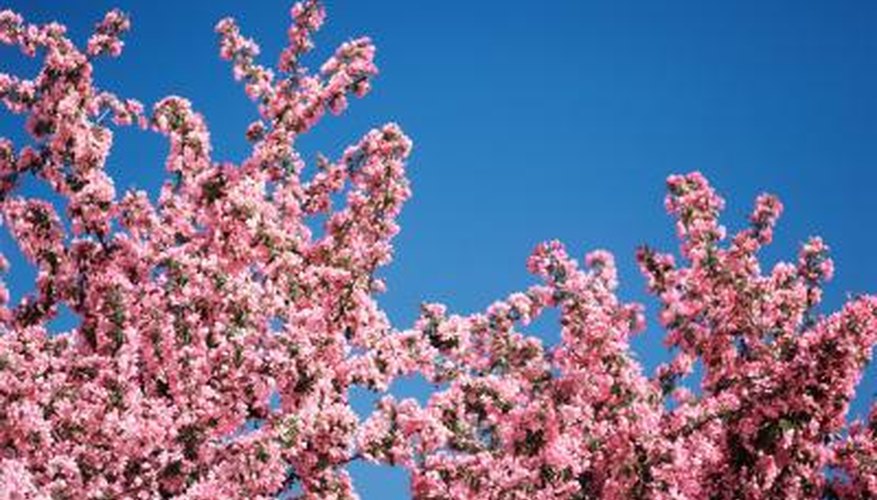Cherry trees are popularly grown both for their fruit and their spring blossoms. Cherry trees tend to be short lived given their high susceptibility to a variety of diseases and insect infestations. The average life of a cherry tree is about 20 years, but the tree is still widely used as an ornamental and specimen planting in landscapes. A number of insects cause damage to the cherry tree foliage.
Cherry slug
Cherry slug is cited as potential foliage pest of cherry tree by the University of California Extension. The insects are 5mm/0.2-inch long, glossy, black sawflies with brown-headed, white larvae. The larva head is wider than the body. Right after they hatch, the larvae cover themselves with an olive green secretion. The grubs immediately start feeding on cherry tree foliage and skelotonise the entire leaf leaving only the network of veins. Severe infestations lead to poor fruit growth. Chemical control options for cherry slug control include applications of spinosad, spinetoram and diazinon.
- Cherry slug is cited as potential foliage pest of cherry tree by the University of California Extension.
- Right after they hatch, the larvae cover themselves with an olive green secretion.
Cribrate weevil
The cribrate weevil is a cherry tree pest that damages the leaves of the tree, as cited by the University of California Extension. Cribrate weevils are 13mm / 0.5 inches long and dark brown in colour. The nonturnal insects feed on the tree at night, hiding in the dirt below the tree in the daytime. Weevil larvae are white and legless and damage tree roots while the adults eat the edges of the foliage, creating a ragged look. In severely infested trees, the insects eat the entire leaf and there is branch and twig dieback. New trees may be killed. Control cribrate weevils with carbaryl applications.
- The cribrate weevil is a cherry tree pest that damages the leaves of the tree, as cited by the University of California Extension.
- The nonturnal insects feed on the tree at night, hiding in the dirt below the tree in the daytime.
Fruittree leafroller
The University of California Extension site lists fruittree leafroller as a foliage pest of many fruit trees including cherry. The insects overwinter as eggs on the twigs and the larvae, in the form of dark green caterpillars with black heads, start to emerge in early spring. The larvae eat the foliage and new buds, tying them together with the silk webbing. The larvae do not feed on the fruit, but the fruit is damaged from webbing on the foliage around it. Management includes the introduction of natural predators like green lacewings, assassin bugs and minute pirate bugs in infested trees. Chemical control options include the use of Bacillus thuringiensis.
- The University of California Extension site lists fruittree leafroller as a foliage pest of many fruit trees including cherry.
- The larvae eat the foliage and new buds, tying them together with the silk webbing.
